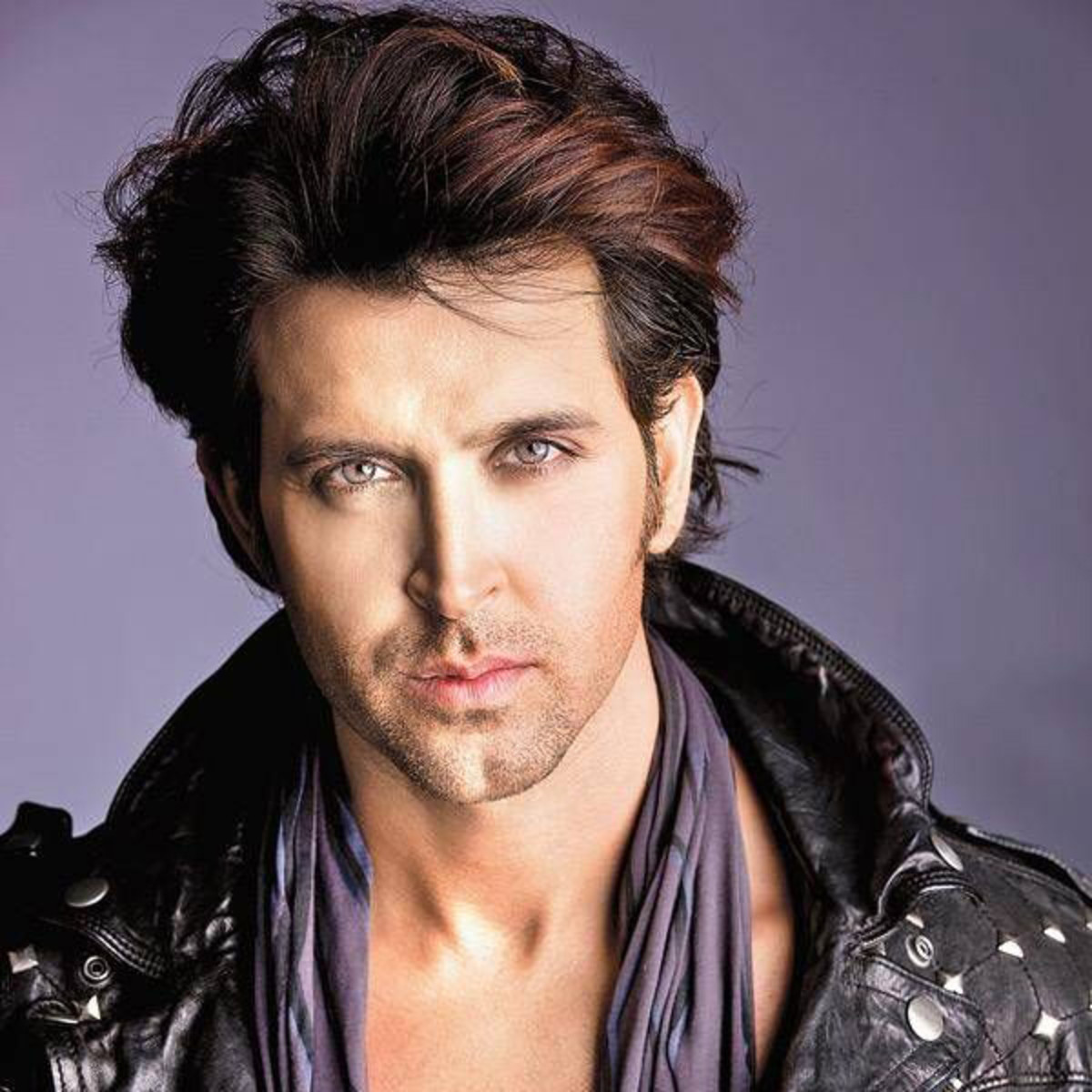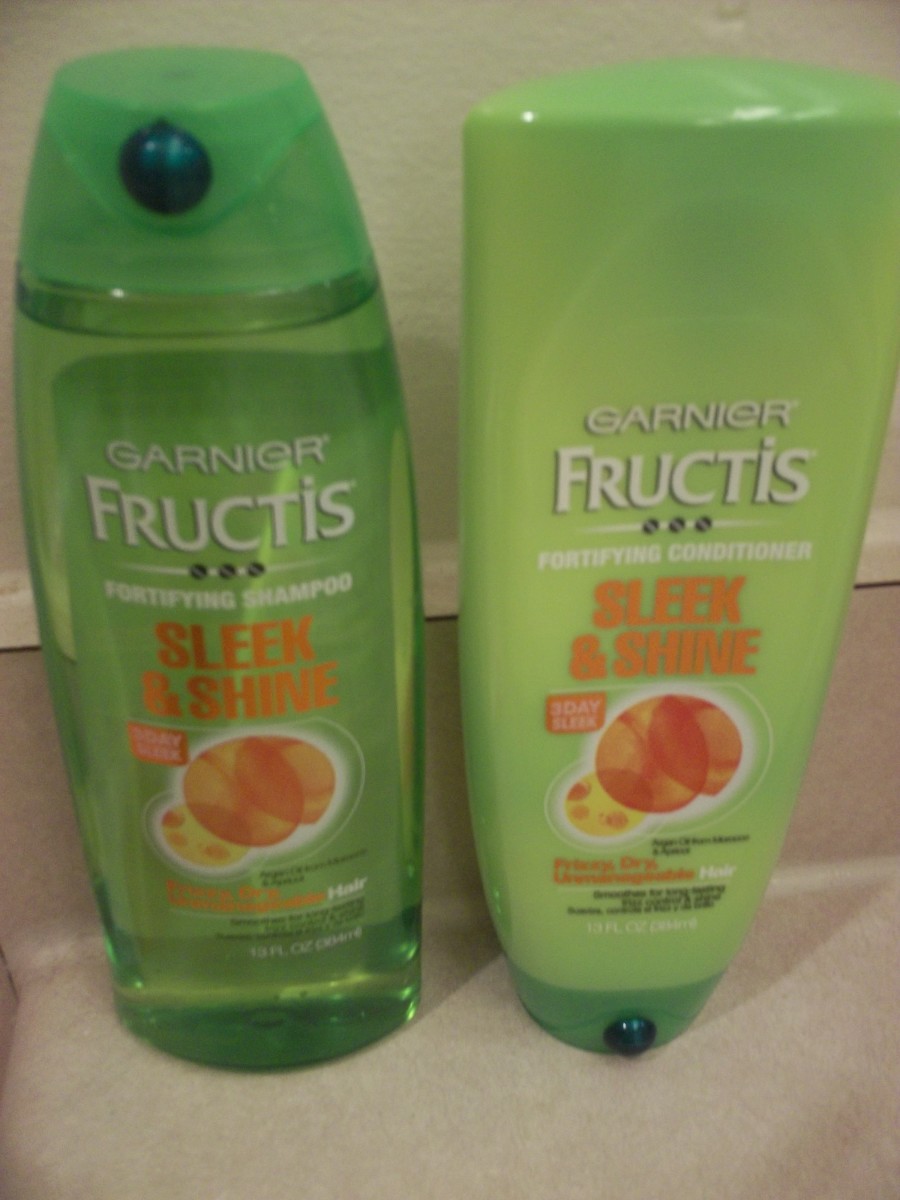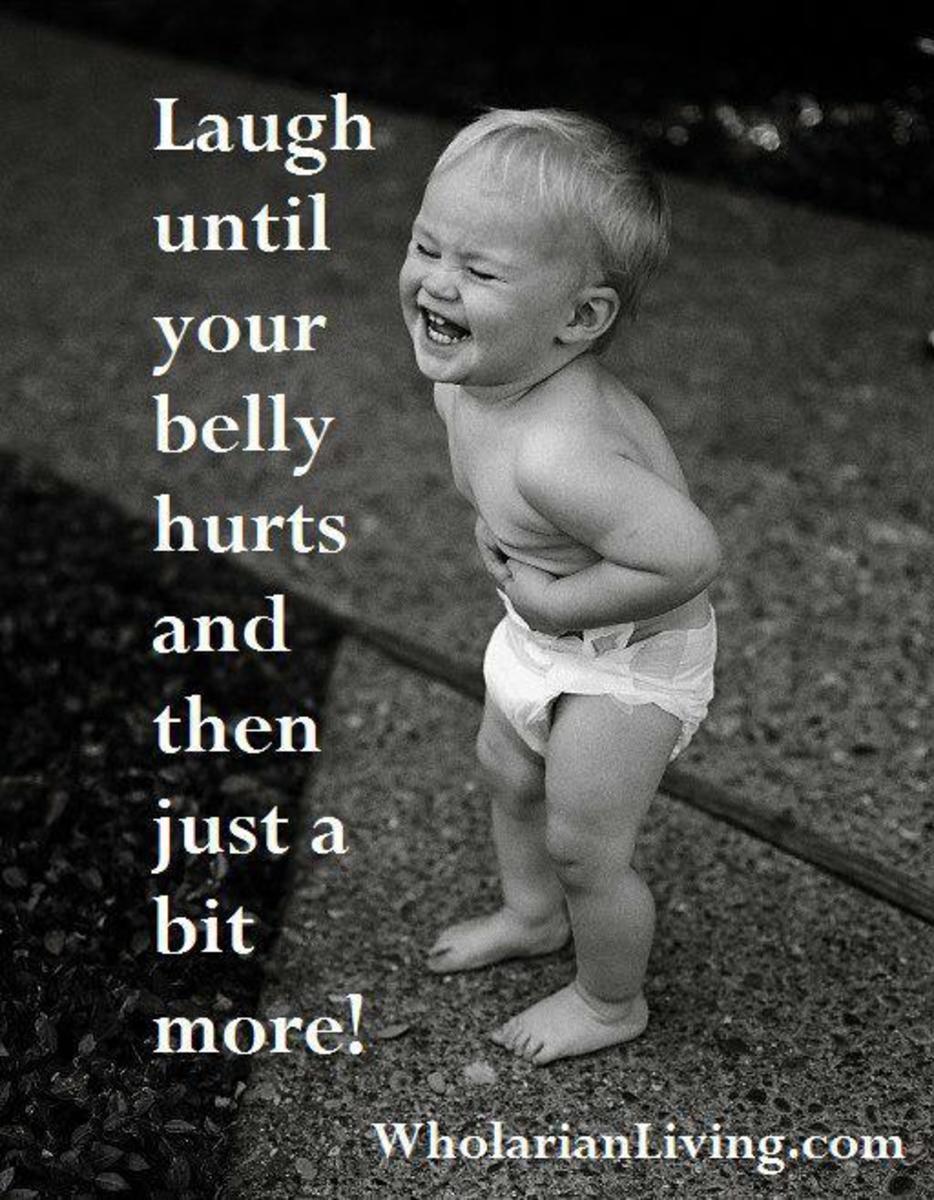Celebrating the Life and Legend of Hugh O' Brian: Part of Universal's New Comedy Team of Bud & Hugh.
Did Universal-International really plan on making Buddy Hackett and Hugh O' Brian a comedy team?
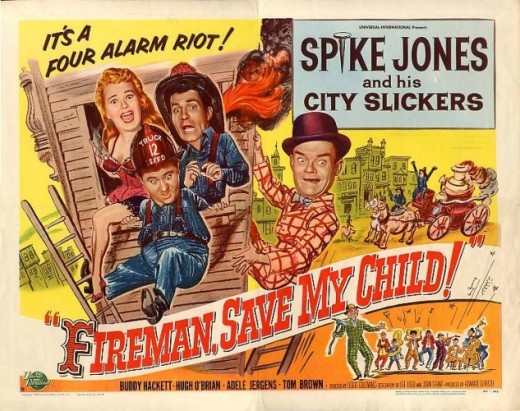
You are all merely contract players & we have your soul.
In the "dog days" of major film studio control your soul was theirs if you were a 2nd and 3rd tier contract player. At Universal-International things were changing in a big from the '30s and '40s. The studio was signing younger men and women who could be groomed for a stardom that for most of them never happened. If it did happen it was more than likely not from what a contractee did at U-I but from a loan-out, a major independent, or a television show.
Gone was the cheap Universal globe logo which occasionally had the plane flying around it. The new streamlined redefined U-I logo was spashy, more defined, letting everyone know they were one of the "big kids" now and not just a studio of monsters, slapstick comedy and Deanna Durbin. The name change happened in a merger with International Pictures but it would once again become Universal Pictures in 1962 through another merger otherwise we might be taking the kids to Universal-International Theme Parks.
They had the same elements, they were just update and repackaged. Their horror franchises were still going strong with Frankenstein's Monster, Dracula, The Wolf Man and Mummy were now replaced with things that were caused by things more pertinent to the modern 1950s, usually radiation or some such warning. Now there were giant spiders, ever expanding monoliths, a man with a shrinking problem, things that came from outer space, mole men and the 'Gill Man' (Creature from the Black Lagoon. The comic stylings of W.C Fields, Olsen and Johnson, and The Ritz Brothers were now replaced with hipper series films like Frances the Talking Mule and Ma and Pa Kettle. Less slapstick and more situation.
There were still Arabian Adventures but with Tony Curtis and Piper Laurie instead of Jon Hall and Maria Montez. The comic stylings of W.C Fields, Olsen and Johnson and The Ritz Brothers were now replaced with comedy that had less slapstick and more situation comedy like Frances the Talking Mule and Ma and Pa Kettle.
The one major holdover was the comedy duo that saved the studio from bankruptcy in 1948 with what is likely the most perfect send-up of the horror monster icons ever put on film without making them look foolish, Abbott and Costello Meet Frankenstein. By combining the Monster, with the Wolfman and Dracula, having them play it completely straight while Bud and Lou did their usual fast paced comedy makes for a film that never gets old. One of the main reasons for this is that the boys were talked into eschewing most of their usual word and sight games in favor of letting the story play out in a natural manner. When they do add a variant on their usual gags, like the moving candle gag from Hold that Ghost, it's very natural. The film was a huge hit causing the duo to have a tremendous surge in popularity; the film did indeed save the struggling studio from going into receivership.
Abbott and Costello had already helped Universal Pictures out when the studio signed them to a one picture deal with supporting roles in One Night in the Tropics (1940). The radio duo stole the movie from stars Allan Jones, Robert Cummings and Nancy Kelly; already huge radio star they now were able to utilize their popular radio routines visually including "Who's on First." On the radio the comedy team needed to make sure the audience could tell the difference in their voices due to the quick patter tied to their routines. The gimmick was simple, Lou simply raised his voice to give it a more childlike quality much like Curly Howard of The Three Stooge's; Curly's brother, Moe said in his memoirs that the young aspiring comic Lou (Crisstillo) would stand back stage and study Curly's when they were on the same theatre bill. What's interesting about their first screen introduction is they are heard before being seen. To heighten the recognition and anticipation of the audience used to hearing them on radio is Lou's high whinny voice and Bud's stern admonition. Once signed to a regular contract with the studio Lou began to tone down the high voice, a wise move due to the fact that he could now do with his body visually what could only be achieved with his voice on radio. He would still bring the high vocal quality out when needed at just the right moment to remind the audience. that welcomes the theater goers and he sounds more like he did on radio in this film then he would when they became major stars and he only need to pull the vocal trick out when needed.
They couldn't have come along at a better time for Universal who was having an identity crisis in 1940. The theater audience had grown tired of their bread and butter creature features and started signing radio acts like Edgar Bergan and Charlie McCarthy along with W.C. Fields who had been a big star at Paramount Pictures a few years before. The Ritz Brothers
Bud and Lou were getting a bit long in the tooth; Bud Abbott was born in 1897, Lou Costello in 1906. Since then the duo had been strong contenders at the box office despite what has been written about their careers as the 1950s approached. From 1948 until leaving the studio they made films released through Warner Bros., and independent Eagle-Lion, while earlier in the decade they had a separate contract with MGM for a series of successful films, and then there was their home studio, Universal International. Add to all this that in 1950 the boys began on a rotating basis with others stars to co-host The Colgate Comedy Hour on the NBC Network and in 1952 The Abbott and Costello Show, originally on CBS, moving to NBC for the second and final season. If anything they were becoming over exposed.
By 1952 and the release of the decisively juvenile Jack and the Beanstalk a film the Costello family produced for Warner Bros. their comedy and theater goers began to think of them more as wholesome but juvenile and more in line with the kiddie crowd. The parents would come along to take the kids, but they would also come because it was Abbott and Costello. More and more, however, you could get a more undiluted Bud and Lou from their television shows, which worked against them as moneymakers.
The one hold
While other major studios were worried about the threat television posed, they were still making films with their stable of solid stars that had been with them over the years. U-I had never had the stature of stars like MGM or Twentieth Century Fox and so this streamlined approach would make them a leader in the new era; MGM would follow when it shifted towards television. Soon entertaining westerns with Audie Murphy and Jock Mahoney once he moved from Columbia. There were still some holdovers from the "Old Days" like the Arabian night adventures from the 1940s with Jon Hall and Maria Montez, now replaced by Tony Curtis and Piper Laurie. And they didn't forsake their creature features, but they did modernize. Once known for Frankenstein's Monster, the Mummy, Dracula, and the Wolf Man, the word horror was replaced by science fiction, no matter how science as opposed to fiction there was. Now U-I had Mole People, a giant Tarantula, Monolith Monsters, and 3D like It Came from Outer Space and of course The Creature from the Black Lagoon. All this done as if these productions had been placed on a conveyor belt gliding from station to station as each component is placed just as it should be.
If you could be utilized in this atmosphere your life would be busy if not monetarily reimbursed under contract. This was the life of actors such as George Nader, Gregg Palmer (Palmer Lee), Lance Fuller, James Best, Charles Drake, Grant Williams and Hugh O' Brian. These were a few of the Universal hunks hoping for the big role to stardom. Best would make it years later on television as Sheriff Roscoe P. Coltrane on The Dukes of Hazzard and A move to Europe for Nader made him a success there but it would be a bitter success due to the fact it was forced exile after U-I and a powerful agent outed his private life to save a bigger star's reputation. Nader would later be remembered in the bigger star's will.
Gregg Palmer would forego the leading man look after a while, putting on a few pounds and becoming a stellar character actor, usually as a hulking brute. Fuller, who actually was part French and Cherokee, worked steady but today is more of a cult actor for his roles in films like This island Earth, Bride of the Beast, She Creature, and Voodoo Woman, only one of which was made by U-I. Charles Drake would go on and be a working journeyman actor never making much of a splash, while the other token tow head, Grant Williams, had success in the '50s with the sci-fi genre at U-I and in the '60s upon his move to Warner Bros. television.
Best, Fuller, Palmer, Nader and O' Brian were exotic enough looking in less politically correct times they could play characters from anywhere in the world, Asian, Middle Eastern, Native American and then any one of them could turn right around and play the hero's best friend or worst enemy in their next film.
By 1954, Hugh O' Brian had been a working actor for seven years, slowly building up his resume working at RKO, Lippert, Republic, a Gene Autry western at Columbia Pictures and a number of early television productions. At 29, Hugh had a good start and signing with Universal-International might have been a good move for an up and coming actor, not to mention his agent probably who wanted that steady income; but unless you where Rock Hudson, Tony Curtis, and to an extent Audie Murphy, you were a supporting hunk until you could prove otherwise.
Like any streamlined which is believed to be down to a science sometimes a monkey wrench can get thrown into the works, much like Charlie Chaplin in Modern Times. When that happens the saying "time means money" really takes on a new level of importance. Especially when it involves a "B" movie which is guaranteed to make the studio money. The very bread and money type of movie that affords the occasional glossy overwrought cheesy "prestige" melodrama so popular at the time. With a large part of the production already in the can decisions had to be made about what to do? Shutting down production and taking losses would just never do, even if it means taking desperate measures. Desperate or not it is a bit puzzling when after playing mainly hard ass westerners, medieval Persian villains, and proud Native American warriors, that Universal-International would cast Hugh O' Brian as a wacky fireman with a rotund even wackier partner. After-all, didn't they already have Abbott and Costello?
"Who's On First?" has never been equaled.
Bud and Lou, nearing the end of a successful teaming
Arguably, Abbott and Costello are the most successful comedy team of all time. Their critics will point out that they were always using the same tried and true routines in their films whether they were making them for Universal, MGM, Warner Bros. or Eagle Lion. However, it worked and people loved them; when they did drop the routine riddled venue like in Abbott and Costello Meet Frankenstein a classic was born.
The duo had saved Universal (International) from bankruptcy and were the most successful thing they had going for them in the 1940's, but heading into the 1950's an audience and their viewing habits were changing. Dean Martin and Jerry Lewis brought a vitality and a budget to their Paramount offerings. They were goofy, but it was a youthful goofy with the "crooner and the monkey." Bud and Lou were still extremely popular but their audience was getting younger as their humor seemed more juvenile and the budgets dropped on their films. Just a few years before Abbott and Costello had saved U-I from bankruptcy but to the studio 1948 was a long time ago. DEanna Durbin, another Universal breadwinner had left the studio as had W.C. Fields, although he couldn't help it as he died on Christmas day, 1946. After meeting Frankenstein, the boys would meet Dr. Jekyll and Mr. Hyde, the Invisible Man and the Mummy, each worse than the one before it, not to mention the ones in between. They also had the Costello produced Abbott and Costello television show which is fun to watch but it was originally just an excuse for Lou to get all their popular routines on film for ownership rights. They also were revolving hosts on the Colgate Comedy Hour as was Martin and Lewis. To say that Bud and Lou were overexposed going into the 1950's after 10 years of being big film stars was an understatement. To give a little bit of insight as to how Abbott and Costello were being used to finance the bigger budget studio films can be shown in the little difference between the budget for Meet Frankenstein in 1948 for $800,000 and Meet Dr. Jekyll and Mr. Hyde in 1953 of $738,000. Six years apart and the later film was brought in for less! The whole point is that the comedy duo was now the funding for other films, and how do you guarantee that money? Making sure their budgets for Bud and Lou's films never vary. The fast pace of their films had really taken a toll.Lou had been through some very rough stages since 1943, when a recurrence of his childhood illness rheumatic fever kept him down for 6 months. As a result, despite his pratfalls and slapstick, he would suffer from a weakened heart.
but the team would say good-bye to each other. Lou would be dead at the age of only 52 in 1959, shortly before his only solo film, The 30 Foot Bride of Candy Rock was to be released.
A terrific collection of A & C's meet the monster series
Cutting corners on 2nd features was always a concern
This is all a way of explaining where the team was in the caste system at Universal-International Pictures by 1954. They were older, Bud was much older than Lou at 59. There would be no 1954 release for the team and only two more at the studio, Abbott and Costello Meet the Keystone Cops and Abbott and Costello Meet the Mummy both in 1955. A & C Meet the Mummy is interesting to watch simply for the fact that Abbott appears heavier than Costello due to Lou's ill health.
By this time their television show had been cancelled and they were facing the same fate as the juvenile cowboy heroes of television. The audience was growing up and wanted something a bit more glossy. Never-the-less, the film that would come to be known as Fireman, Save My Child, not to be confused with the 1918 Harold Lloyd or 1932 Joe E. Brown films of the same name, was going to be another of the boy's films to satisfy their multitude of fans still filling the theaters. But like all programmers, it needed to be done quickly and cheaply. Nice salaries. They were contracted for $75,000 apiece (plus 20% of net profits) for "Fireman, Save My Child" before they dropped out--per the production files at USC.
Abbott and Costello had already done a few long shots and the stunt doubles had been filmed to match them in the harder set-ups. Then came time for the stuntmen to do the tricky stunt work, again expediently to save time and prevent paying more for each stunt then they had to.
Things were running rather smoothly until Lou took ill with heart problems and just couldn't go on. This left the studio and Bud high and dry. There was all that footage in the can, something could surely be done with it? That's where are story actually begins.
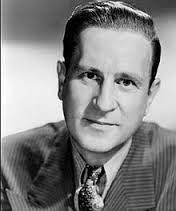
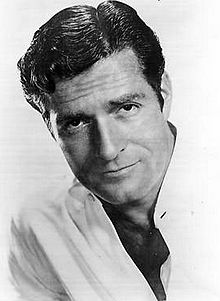
Nobody looks more like Bud Abbott than Hugh O' Brian...right?
One of the very people who would be at the forefront of the mature western surge of 1955, Hugh O' Brian, would now enter the story. He would be one of those who helped the "less mature" antics of A & C make an exit from the silver screen, although in a round about way, by replacing Bud Abbott. Hugh looked nothing like Bud, except he was thin and would fit the bill in a pinch. Hugh was under contract, meaning he worked cheap.
Hugh O' Brian, without a doubt, will be forever etched in western fans minds as Wyatt Earp. Forget that he, nor his program, bears much resemblance to the character or fact (well maybe if you watch while indulging in your latest prescription of medical cannabis gummy bears) but it served its purpose exposing many of us for the first time to this legendary man of the west.
It also elevated Hugh to star status, taking the television western out of the hands of the old guard cowboys that rode in from film, like Gene, Roy, and Hoppy, bringing in the more adult heroics of Matt, Cheyenne, and Wyatt.
We need to understand that just one year before The Life and Legend of Wyatt Earp, O' Brian was toiling away in any role the studio gave him.
From the mouth of Hugh himself.
I asked him how exactly he recalls replacing Bud Abbott in Fireman Save My Child (1954), while Buddy Hackett took over for Lou Costello. "Lou fell ill after they filmed some initial shots, but the majority of the stunt double work had been done to match up with Bud and Lou later on. This being a programmer, Universal-International didn't want to go back and spend money on re-shooting those scenes. They sent out word that they were looking for two of their contract players who could play the parts to match what had been shot. Essentially they were looking for someone to match the stunt player's footage more than the stars."
Spike Jones and His City Slickers. "Cocktails for Two"
Spike Jones and his band were already scheduled to be in the film but not in such a large capacity. Their role was expanded to make sure people realized it was
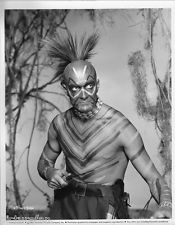
"They added Spike Jones and his City Slickers to the mix to make sure the audience knew it was a comedy," Hugh would tell me. Spike and his band were riding high with their own popular show on NBC at the time and really have to be seen to be believed. Kind of an early "Weird Al" Yankovic.
In reality, Spike and his group had already signed to appear in the film, but only for a couple of their specialty numbers. With Bud and Lou out of the picture the film basically became the only starring vehicle for Spike Jones.
One big surprise Hugh revealed to me was that the studio had plans for the new duo. "The film actually made money for them. They planned to make more comedies with Buddy and me replacing Abbott and Costello but they never got around to it." So would they have been known as "Bud and Hugh?"
Bud and Hugh doing their best Bud and Lou
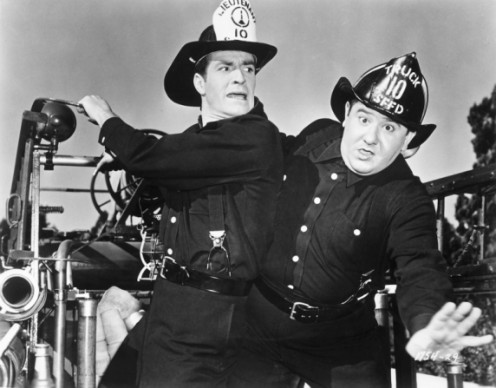
Fireman Save My Child was released on May 2nd, 1954, The Life and Legend of Wyatt Earp debuted the next year, September 6th, 1955, thankfully preventing anymore teamings of O' Brian and Hackett.
Not so much a loss to the comedy world, but a great gain to the history of TV westerns.
Castle Films the DVD's of their time, kinda?
The footage below was one of the film shorts you could buy from Castle Films and play on your 8mm projector at home. This was the equivalent back then of a DVD today. Times haven't changed so much have they?

![Abbott and Costello Meet the Monsters Collection [DVD]](https://m.media-amazon.com/images/I/611lX6NVsFL._SL160_.jpg)


